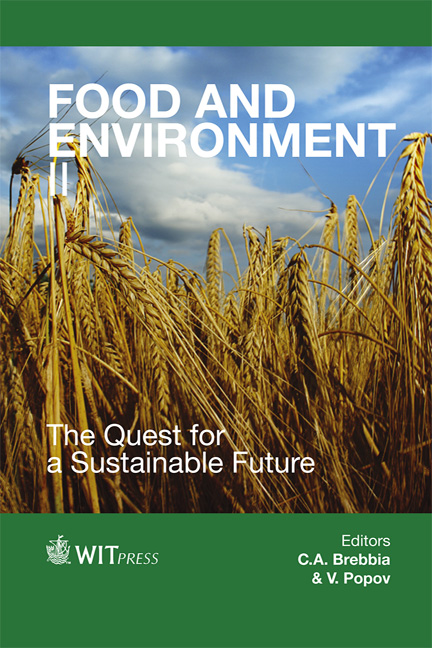Nutritional And Medicinal Value Of Camel (Camelus Dromedarius) Milk
Price
Free (open access)
Transaction
Volume
170
Pages
12
Page Range
221 - 232
Published
2013
Size
105 kb
Paper DOI
10.2495/FENV130201
Copyright
WIT Press
Author(s)
A. T. Al-Juboori, M. Mohammed, J. Rashid, J. Kurian & S. El Refaey
Abstract
The camel (Camelus dromedarius) is of significant socio-economic importance in the United Arab Emirates and its milk constitutes an important component of human diets in this country. In the present study, the analysis of nutritional value and medicinal properties of camel milk was recorded. The mean values of the main components monitored (g per 100 g) were: density (1.024±0.0021), pH values (6.67±0.059), moisture (88.96±1.222), proteins (3.71±0.16), fat (2.21±0.16), lactose (3.36±0.25), ash (0.48±0.05) and total solids (11.26±0.69). The overall mean values (%) were 14.65±7.70 for iron, 8.19±0.01 for zinc, 0.42±0.02 for copper, 0.19±0.01 for potassium, 0.14±0.02 for sodium, 0.11± 0.02 for calcium, 0.05±0.01 for phosphorus and 0.03±0.02 for sulphur. Camel milk is highly nutritious and is very suitable for human nutritional requirements. Camel milk is safe for consumption by human babies. However, be advised that camel milk is saltier than human and cow milk. Camel milk is richer in iron, zinc, copper, potassium, sodium, calcium and vitamin C than cow milk which makes it closer to human breast-milk than cow milk. The fat content of camel milk consisting of unsaturated fatty acids, volatile fatty acids, mainly linoleic acid, makes the milk more digestible and more cardiovascular friendly. Camel milk also has valuable therapeutic properties as it contains a high concentration of anti-bacterial, anti-fungal, anti-viral and anti-parasitic compounds and these help fight serious diseases like hepatitis, Rota viral diarrhoea, tuberculosis, and shistosomiasis. Also, camel milk has been used therapeutically against certain types of cancer, diabetes, colitis, autism and Crohn’s disease. Camel’s milk can
Keywords
Camelus dromedarius, camel milk composition, antimicrobial activity, antitumor activity, diabetes, lactose intolerance, milk allergy, autism, Crohn’s disease





